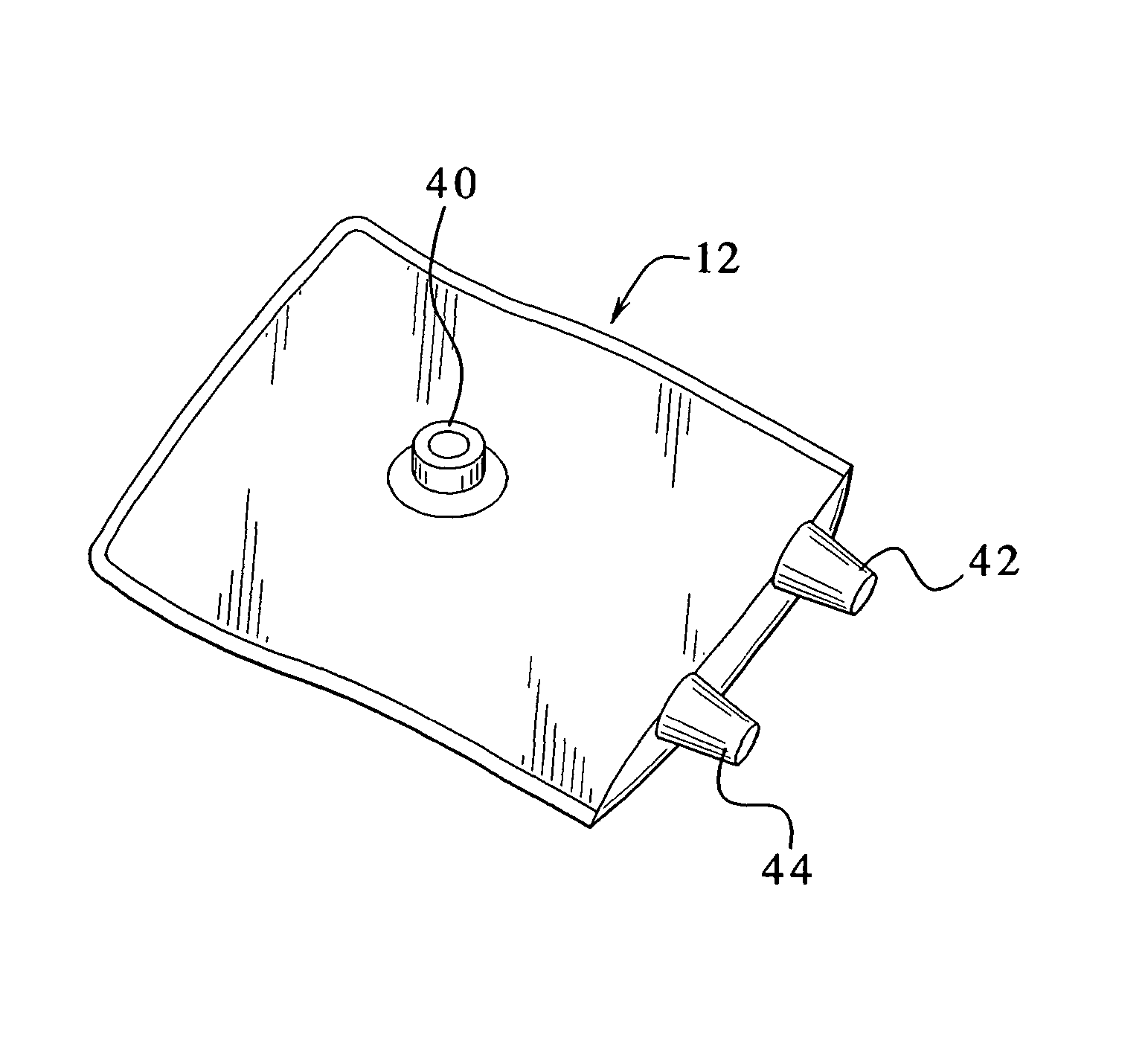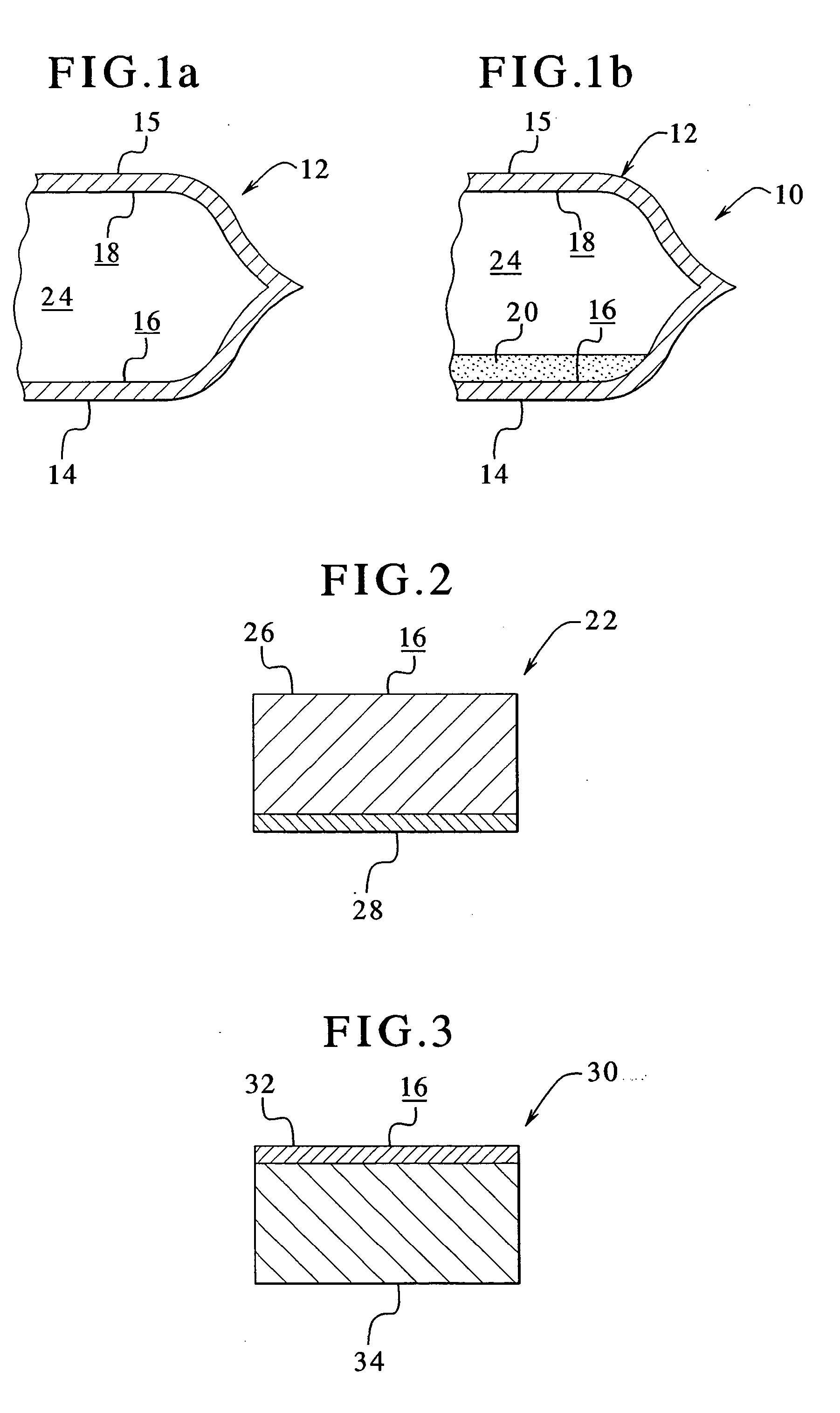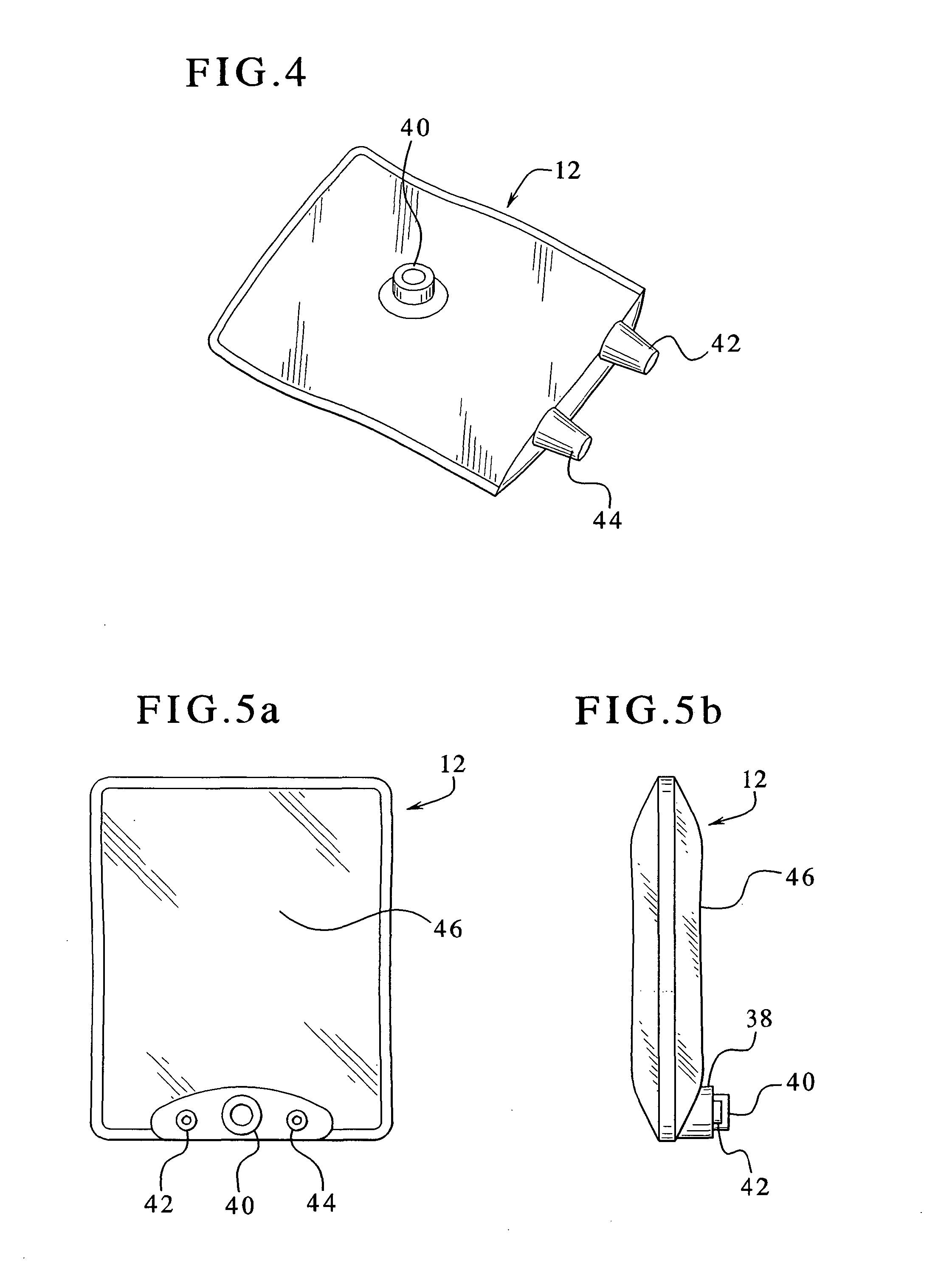In vitro cell culture employing a fibrin network in a flexible gas permeable container
a fibrin network and cell culture technology, applied in the direction of apparatus sterilization, specific use bioreactors/fermenters, biomass after-treatment, etc., can solve the problems of unsuitable transplantation and therapeutic applications of cultured tissues grown in vented vessels, container ineffective for growing adherent cells, and undesirable tendency to decay charg
- Summary
- Abstract
- Description
- Claims
- Application Information
AI Technical Summary
Benefits of technology
Problems solved by technology
Method used
Image
Examples
example 1
A Flexible, Gas Permeable Cell Culture Container with Fibrin Matrix Using a PL269 Cryocyte™ Bag as the Supporting Container
Cryocyte™ bag is supplied by Baxter International Inc. (Baxter Code No. R4R9951, PL269). A fibrin matrix is formed with TISSEEL™ components on the bag surface being combined at a final concentration of 10 mg / mL Sealer Protein Concentrate and 50 IU / mL thrombin, respectively. The fibrin matrix is prepared and the concentration of the fibrinogen in the first solution is from about 2.0 to about 20 mg / mL, the concentration of the thrombin in the second solution is from about 2.5 IU / mL to about 50 IU / mL, and the concentration of the calcium in the second solution is from about 40 to about 100 mmoles / mL. Approximately 0.5-1.0 mLs of the first solution is mixed with 0.5-1.0 mLs of the second solution to form a fibrin-forming mixture. The polymerization reaction takes place at room temperature in 1-5 minutes and is complete in about 5-15 minutes at 37° C. The fibrin ma...
example 2
Pancreatic Cell Culture in a Flexible, Gas Permeable Cell Culture Container with Fibrin Matrix Using PL269 Cryocyte™ Bags as Supporting Containers.
The fibrin treated PL269 Cryocyte™ bag is seeded with cultured pancreatic cells. The formation of a fibrin matrix in the bag is confirmed with scanning electron microscopy (SEM). As shown in FIG. 5, the SEM photo shows the fibrin matrix with cells adhering to the matrix.
example 3
Cell Culture of Pancreatic Cells in PL269 Bags with and without Fibrin Matrix, and in T-75 Non-Gas Permeable Rigid Polystyrene Flasks.
Pancreatic cells are cultured in PL269 bags with and without fibrin matrix, and in T-75 polystyrene flasks for 4 days. The cells in the bags are observed with a phase contrast microscope. The cells appear to be fibroblasts. The adherence of the cells within the fibrin matrix in the PL269 bag (FIG. 7) is comparable to the T-75 flask (FIG. 6). The PL269 bag without the fibrin matrix has no apparent attached cells (FIG. 8). Floating cells can be seen throughout the culture medium, not adhering to any of the bag surfaces.
The flask provides a positive control, confirming the presence and appearance of “anchorage dependent” cells that are maintained in an “open” method of culture. The fibrin matrix treated PL269 bag shows cells having a comparable physical appearance, which are maintained under a closed system culturing process.
PUM
| Property | Measurement | Unit |
|---|---|---|
| thickness | aaaaa | aaaaa |
| thickness | aaaaa | aaaaa |
| flexural modulus | aaaaa | aaaaa |
Abstract
Description
Claims
Application Information
 Login to View More
Login to View More - R&D
- Intellectual Property
- Life Sciences
- Materials
- Tech Scout
- Unparalleled Data Quality
- Higher Quality Content
- 60% Fewer Hallucinations
Browse by: Latest US Patents, China's latest patents, Technical Efficacy Thesaurus, Application Domain, Technology Topic, Popular Technical Reports.
© 2025 PatSnap. All rights reserved.Legal|Privacy policy|Modern Slavery Act Transparency Statement|Sitemap|About US| Contact US: help@patsnap.com



